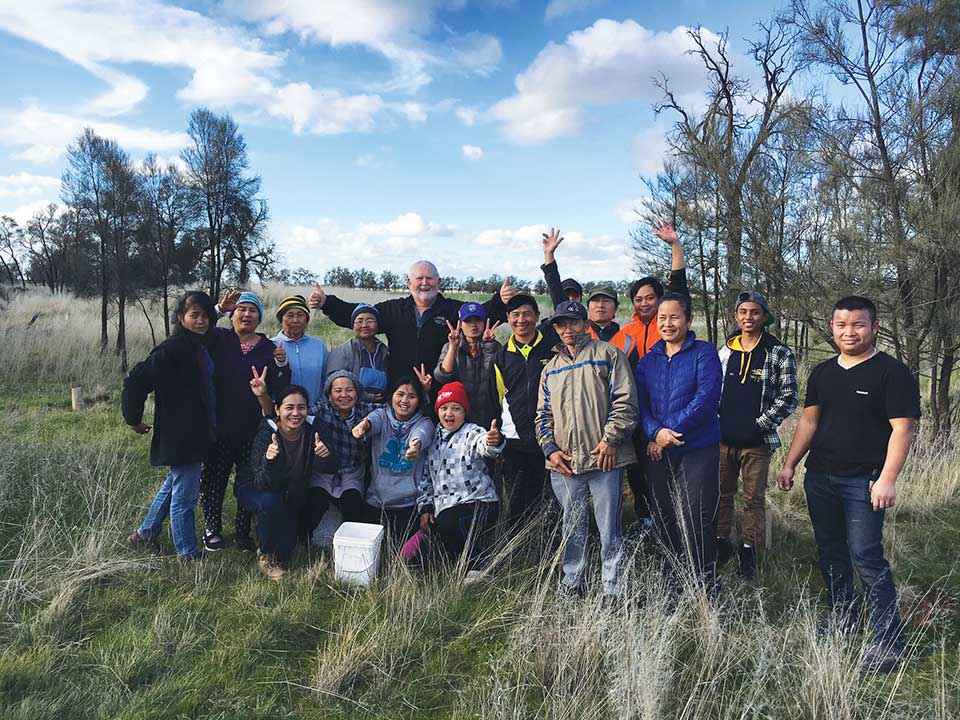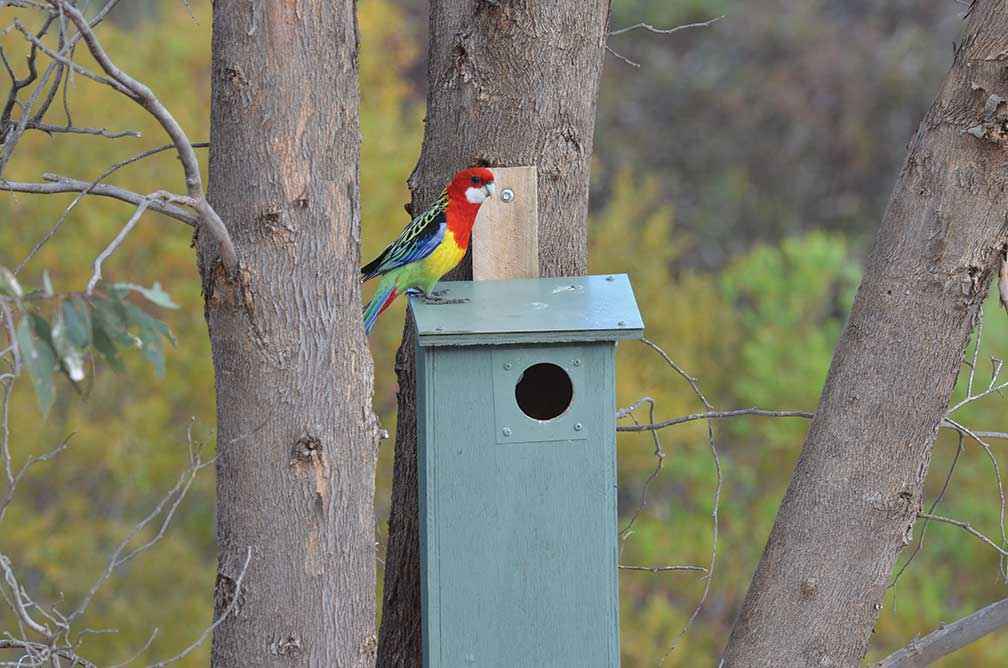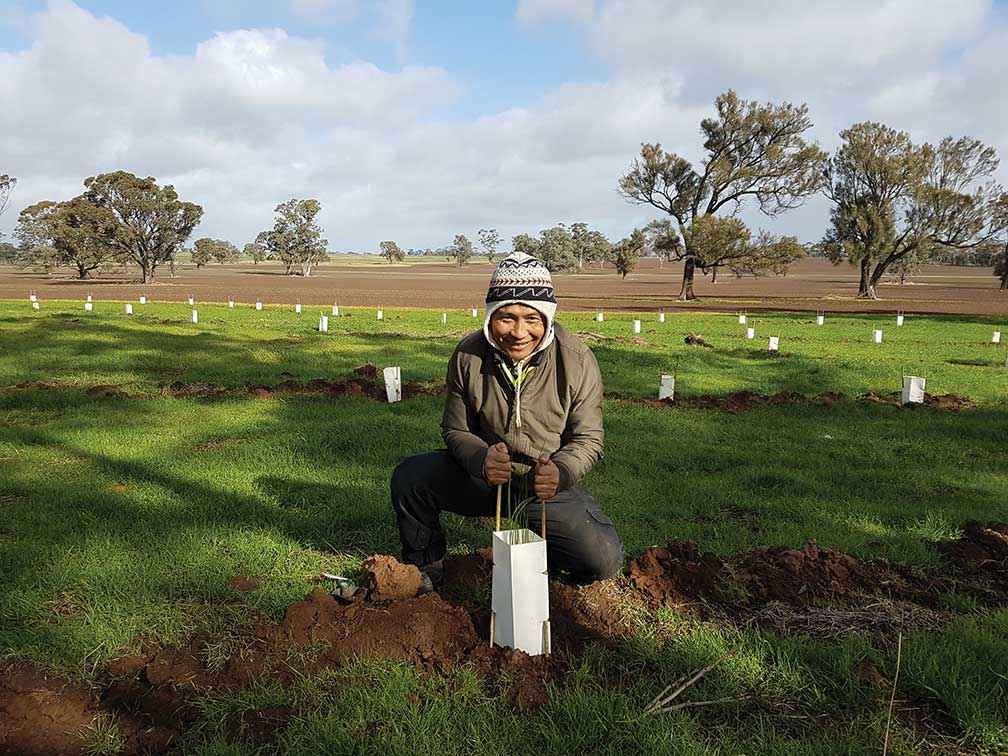Victorian Landcare Magazine - Spring 2024, Issue 88

Project Hindmarsh, the Big Desert to Little Desert Biolink, is an initiative of the Hindmarsh Landcare Network (HLN). It began last century with the grand vision to reconnect the two desert regions in Victoria’s west with a series of revegetated links across a fragmented landscape.
Since its first planting weekend back in 1998, Project Hindmarsh has become a tremendous success story. The project has brought volunteers from the city and country together to plant corridors and protect and restore remnant vegetation. Over the last 25 years Project Hindmarsh has planted more than two million trees, shrubs, herbs and grasses, protected and restored over 1000 hectares of roadsides, remnant vegetation and degraded farmland, and involved thousands of volunteers in Landcare activities.
Reflecting on past achievements has raised some important questions for the HLN to consider. Has 25 years of Project Hindmarsh been instrumental in rebuilding functioning ecological systems and connectivity? Has it provided a broad community sense of ownership of nature and helped restore Country? Or are we just planting trees and feeling good about ourselves?
Interrogating these fundamental questions has driven HLN to change its approach to building biolinks. While the project continues to be underpinned by sound ecological principles it is now viewedmore holistically. There is acknowledgement of the importance of broad community participation and Traditional Owner on-Country culture and connection.
Project Hindmarsh has undertaken Aboriginal Cultural Heritage surveys of its planting sites since 2017. HLN has engaged the Barengi Gadjun Land Council (BGLC) to undertake the surveys, and over the years has identified significant artefact scatters, scar trees, middens and fire pits at many of our planting sites. BGLC makes recommendations for site preparation and planting that Project Hindmarsh strictly adheres to, to ensure plantings are respectful and culturally safe.

Above: An eastern rosella makes use of a nest box in revegetation near Dimboola established by Project Hindmarsh 16 years ago.
Bringing city and country communities together has been a central theme of Project Hindmarsh. The dedication of volunteers has been a key part of the project’s success. The volunteer landscape is changing. People are more aware of the urgency around addressing biodiversity decline. HLN identified the need to broaden community involvement for Project Hindmarsh – and its vision of reconnecting the Big Desert to Little Desert – to remain relevant.
Previously based at Little Desert Lodge in Nhill, the annual planting base has been moved around different Wimmera towns
so that each planting weekend became a major community event, involving partnerships with local groups and businesses. This has given regional communities a greater sense of involvement and ownership of Project Hindmarsh.
Project Hindmarsh has also worked closely with the Karen refugee community in Nhill. The community’s passion for planting, willingness to be involved in Landcare, and sharing their culture and their journey has been inspirational. The planting weekends have featured some delicious Karen curry dinners catered for by community members.
In the end it’s always about the people. The people you meet, the people you help, and the people you work with.
Kaw Doh Htoo spent nine years in a refugee camp before arriving in Australia. Now a Karen community leader, Kaw Doh became involved with Landcare to learn more about the local environment and wildlife.
“I wanted to know how plants are very important for wildlife; I was interested to participate with the plant community,” Kaw Doh said.
Over the last few years HLN has hosted a series of ecological workshops, exploring topics such as fungi of the Little Desert, woodland birds and bird monitoring, plant identification, and seed collection. These workshops have been well received and are in high demand. The HLN has also organised community education events such as biodiversity walk and talks, school holiday nature walks, presentations at Landcare and ecological forums, as well as writing regular articles for state and national newsletters.
To understand whether the years of planting has made any difference to biodiversity, the HLN began monitoring revegetation sites, using birds as indicators of biodiversity. The monitoring has shown that bird diversity starts to increase significantly in revegetation from around six years old, and that by 12 years old, sites are showing a high degree of ecological function. This reflects the growth and development of the trees and shrubs planted, the accumulation of leaf litter and the development of a tree canopy.

Above: Karen community leader Kaw Doh Htoo enjoying a planting weekend at Dinyarrak.
It is very satisfying to see a diverse range of bird species use our planting sites, including a number of listed threatened species. Watching quail scratching around under wattles, goannas scaling trees, wallabies seeking refuge amongst the shrubs and echidnas digging in the soil makes Project Hindmarsh worthwhile.
Project Hindmarsh has sought new and innovative ways to restore the landscape. Worms and wildflowers were the theme for the 2023 planting weekend at Rainbow on the southern edge of the Mallee. This involved replanting the brilliant array of wildflowers along the Rainbow Rise, whose spectrum of colour is said to have given the town of Rainbow its name. Worm castings were used to fertilise
and condition the soil around each plant, helping to kick-start the soil biology that is vital for any revegetation success.
Since its inception, the driving force behind Project Hindmarsh has been the passion and dedication of its volunteers, partners, and supporters. Their vision to reconnect the Big Desert and Little Desert regions of Victoria’s Wimmera has steadily gained momentum, plant by plant.
Jonathan Starks’ Landcare Facilitator role is funded by the Government’s Victorian Landcare Facilitator Program.
For more information email jstarks@hindmarsh.vic.gov.au